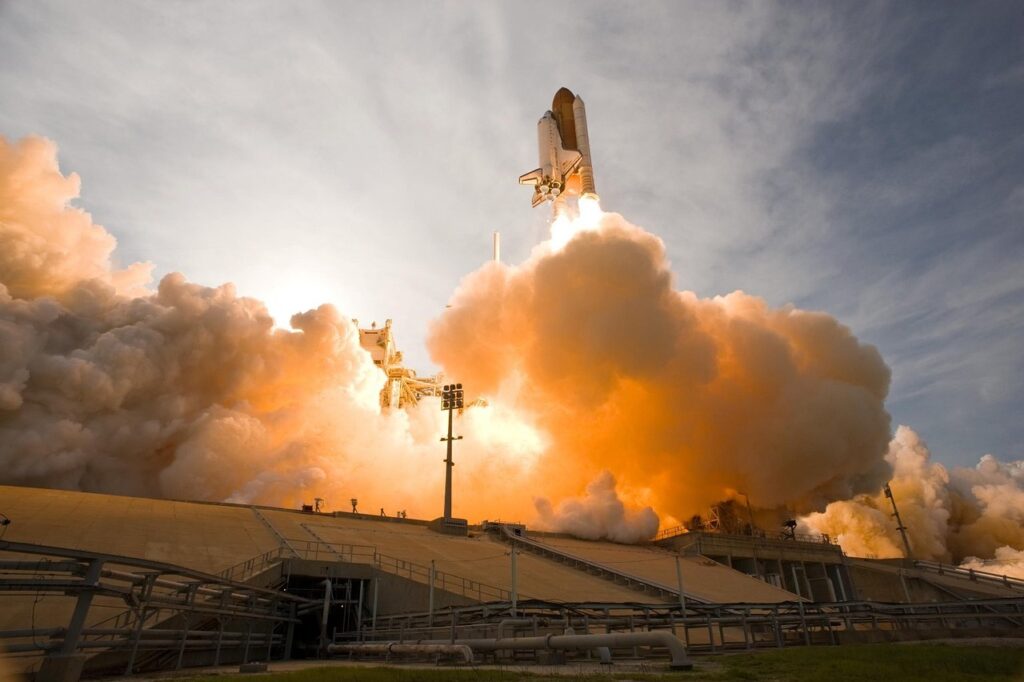What Science Has in Store for 2025
An important climate meeting, the potential return of a certain individual to a prominent political role, and much more: some scientific news that will gladden (or sadden) 2025.
What can we expect from scientific research and space exploration in the coming year? The Nature website has summarized the main objectives that will shape medicine, basic research, climate and public health policies, astronomy, and neuroscience in 2025. Here are some of the most interesting developments to watch out for in the coming months.
An Explosion of Anti-Obesity Drugs Arriving in 2025
Following the success of semaglutide-based drugs and other GLP-1 receptor agonists in combating obesity, 2025 is expected to see the approval of a new generation of weight loss medications. The pharmaceutical company Eli Lilly is developing a once-daily oral drug for the management of weight and type 2 diabetes that should be easier to produce and administer, and will continue trials of a second, even more effective weight-loss drug than those currently available. Retatrutide, currently in phase II of testing, appears to allow for weight reduction of up to 24.2% in 11 months, compared to the 15-20% of therapies available today.
Meanwhile, the Californian biotech company Amgen is working on a once-monthly injectable drug for controlling blood sugar and metabolism. Exploration of other potential uses of GLP-1 receptor agonist drugs continues, for example, against cardiovascular diseases, Parkinson’s, and Alzheimer’s.
2025: The Year of a New WHO Pandemic Treaty?
The need for an international agreement allowing for better coordination in the event of future pandemics, from prevention to hospital management, from vaccine production to distribution, emerged overwhelmingly in light of the problems uncovered by COVID-19.
However, in 2024, this new WHO international treaty did not reach approval due to at least two key sticking points: reluctance from the pharmaceutical industry to donate part of the vaccines produced to developing countries and to sell a portion to the WHO at cost price; disagreements on the rules for sharing samples and genetic sequences of pathogens and on the use of technologies that could help low- and middle-income countries produce vaccines, drugs, and tests quickly in the event of a pandemic.
Another attempt will be made in May 2025: in the meantime, the WHO has updated its list of pathogens at risk of triggering a pandemic, adding about thirty, including monkeypox and influenza A viruses.
The Climate COP Turns 30 in 2025
The 30th anniversary of the start of international negotiations to combat the climate crisis will be celebrated in November 2025 in Belém, capital of the State of Pará, in the Amazon rainforest: it will be the first Conference of the Parties to be held in a symbolic location of the impact of human activities on the planet, after the three COPs in Egypt, the United Arab Emirates, and Azerbaijan.
It is hoped to finalize the unresolved issues of COP29 here, especially on the topic of climate finance. In 2025, progress is also hoped for regarding the lack of an international agreement to combat plastic pollution.
Regarding forests, two satellites will be launched to monitor them from space: the NISAR (NASA-ISRO Synthetic Aperture Radar) mission, a collaboration between NASA and the Indian Space Research Organisation, which will map all land and ice every 12 days; and ESA’s Biomass, which will use radar to measure forest biomass and understand its role in the carbon cycle.
2025: The Unknown Factor
The potential return of a certain individual to a prominent political role weighs heavily on climate agreements. In addition to setbacks in the fight against climate change, more restrictive rules on reproductive rights, significant reversals on vaccination campaigns (given the appointment of a known anti-vaccination advocate to a health-related position), and budget and workforce cuts in scientific agencies are feared.
Developments Expected in Particle Physics in 2025
After 10 years of work, operations could begin in 2025 at the European Spallation Source ERIC (ESS) in Lund, Sweden, the most powerful pulsed neutron source: this research will serve to better understand the molecular structure of matter, with the idea of using what is discovered to solve urgent societal problems such as finding new materials and sustainable energy sources.
In 2025, a detailed feasibility study for the Future Circular Collider (FCC), the successor to the CERN LHC designed for the mid-2040s, will be completed. It will be a potential new particle accelerator with a circumference of almost 91 km, where a total collision energy of 100 teraelectronvolts (TeV) will be reached. The report will contribute to the final decision to be made in 2028.
2025: A… Space Year
2025 will bring some traffic to the Moon (and around the Sun). In January, the Venture Moon mission, from the Japanese private space company ispace, will attempt to land a lander and a micro-rover. Later, another private company, Intuitive Machines of Houston, Texas, will send a lander to the lunar south pole, with a NASA instrument to drill into the ice and a mass spectrometer for analyzing the material just below the lunar surface. The same mission should deliver NASA’s Lunar Trailblazer orbiter into lunar orbit for mapping surface water deposits on our satellite.
Two space missions will analyze the solar wind, the flow of charged particles that our star releases into its outermost atmosphere: the SMILE (Solar Wind Magnetosphere Ionosphere Link Explorer) satellite from ESA and the Chinese Academy of Sciences will study the interactions between the solar wind and the Earth’s magnetic field. NASA’s PUNCH (Polarimeter to Unify the Corona and Heliosphere) will thoroughly investigate the solar atmosphere by capturing 3D images.
The NASA SPHEREx (Spectro-Photometer for the History of the Universe, Epoch of Reionization and Ices Explorer) observatory will also be launched in 2025, a two-year space mission that will map the entire celestial vault in 102 colors and – for the first time – in the near-infrared. The goal is to collect data on over 450 million galaxies and over 100 million stars in the Milky Way, to help understand more about the origin of the Universe.
In 2025, China Could Compete with Neuralink
Finally, in 2025, China should begin larger-scale testing of brain-computer interfaces for the medical rehabilitation of people with spinal injuries and for applications in virtual reality, which in early clinical trials seem to have yielded very encouraging results. We will keep you updated!
Originally posted 2024-12-30 14:53:15.

